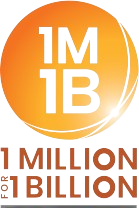Canada’s central bank on Wednesday lowered its key lending rate to 2.5%, giving some relief to borrowers as the country’s economy feels the strain of US President Donald Trump’s trade war.The Bank of Canada had kept its rate steady at 2.75% since March, while assessing the impact of Trump’s shifting tariffs on Canadian businesses that rely heavily on exports to the United States.But the bank said there is now clear evidence that US protectionism is slowing the global economy.“After remaining resilient to sharply higher US tariffs and ongoing uncertainty, global economic growth is showing signs of slowing,” it said in a statement.Canada’s GDP shrank by 1.5% in the second quarter of 2025, with tariffs and trade tensions “weighing heavily on economic activity,” according to the bank.In the first quarter, exporters had benefited from a rush of US orders, as companies stocked up before tariffs took full effect. But Canadian exports dropped 27% in the second quarter as those advance orders faded.Trump has so far kept tariff exemptions for goods covered under the existing North American free trade agreement, which has softened the blow to some extent. Even so, steep tariffs on cars, steel and aluminium are causing significant damage.“Job losses have largely been concentrated in trade-sensitive sectors, while employment growth in the rest of the economy has slowed, reflecting weak hiring intentions,” the bank said.Canada was the first G7 country to start cutting interest rates last year, after raising them earlier to rein in inflation driven by the pandemic.Wednesday’s cut was widely expected, but the bank warned it would move carefully, as US protectionism could still push up prices for Canadian consumers.It said it would closely watch how “reconfigured supply chains are passed on to consumer prices and how inflation expectations evolve.”




